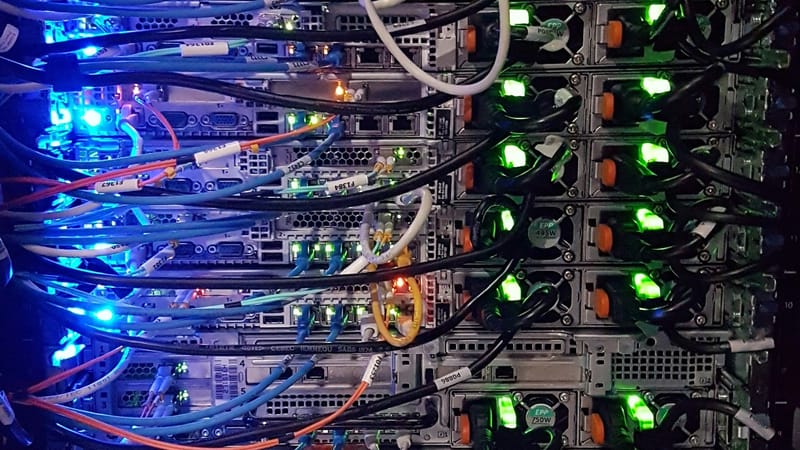The Great AI Reckoning: Meta’s Big Bet Rattles Tech as Wall Street Questions the Price of Intelligence
The aftershocks from Big Tech’s autumn earnings are rippling through Wall Street.
In a week that was meant to showcase artificial intelligence as Silicon Valley’s unstoppable growth engine, investors were instead reminded that even the brightest code can carry a heavy cost.
Meta’s stock was down almost 10 per cent in pre-market trading on Thursday after the company raised its capital spending forecasts far beyond what analysts had braced for. Alphabet, by contrast, reported a quarter that seemed to validate the commercial promise of generative AI.
Microsoft, as ever, split the difference: slower-than-expected Azure acceleration, but evidence of a company still turning vast AI infrastructure into dependable cash flow.The collective picture, drawn from a stack of broker notes published overnight, is one of three companies trying to climb the same wall of worry. The fear is that the AI gold rush could morph into an overbuild.
Alphabet: Turning Search Into a Machine-Learning Machine
Alphabet’s numbers were, in the language of J.P. Morgan, “strong across the board.” Revenue rose 16 per cent year on year to top $100 billion for the first time, with double-digit growth across every major segment.
Search revenue accelerated to 14.5 per cent, fuelled by new AI-powered formats such as AI Overviews and AI Mode, which Google said were boosting both the complexity and frequency of user queries.
Crucially, the company’s cloud arm, long the litmus test for whether AI investments could pay for themselves, grew 34 per cent, supported by what J.P. Morgan called “billions of dollars in revenue from enterprise AI products.” Its backlog of contracts climbed 46 per cent quarter on quarter to $155 billion, a figure analysts believe still understates recent deals with AI start-up Anthropic.
Goldman Sachs described the quarter as a “full-stack approach to AI on display,” praising management’s confidence that AI search was more opportunity than threat. TD Cowen echoed that view, noting that Alphabet beat consensus estimates by roughly 2 per cent across search, cloud and YouTube, with management crediting AI for driving both growth and higher-quality ad clicks.
But Alphabet’s success comes with its own asterisk: capital expenditure. The company lifted its 2025 capex forecast to as much as $93 billion and hinted at an even steeper climb in 2026. That surge, said Goldman, reflects “accelerating AI cloud demand” and implies that spending could rise another 32 per cent next year.
The bullish interpretation is that Google’s AI transformation is self-funding, that the same algorithms inflating its costs are also inflating revenue. The bearish one is that Alphabet, like the rest of the sector, has entered a capex race that nobody can afford to lose.
Meta: The Frontier Lab or the New Cautionary Tale?
If Alphabet’s message was one of monetisation, Meta’s was one of mobilisation. The company reported third-quarter revenue growth of 26 per cent, an impressive beat on both J.P. Morgan’s and TD Cowen’s estimates, driven by a 25 per cent jump in ad sales and double-digit increases in both pricing and impressions.
Chief executive Mark Zuckerberg could hardly have been clearer about what comes next. Meta, he said, intends to become “the leading frontier AI lab,” building out compute capacity on an “industry-leading” scale. To that end, the company now expects capital spending to surge from roughly $71 billion this year to $124 billion in 2026, a 75 per cent jump that would make Meta the single most aggressive builder of AI infrastructure outside of the cloud majors. Total expenses are projected to rise 30 per cent next year to $153 billion.
J.P. Morgan called the shift “outsized relative to Google and Amazon,” noting that Meta lacks a cloud business to monetise its compute base immediately. The firm trimmed its price target from $875 to $800 a share and cut earnings estimates by up to 7 per cent. TD Cowen was equally candid: “Strong 3Q results overshadowed by ramping AI infrastructure spend,” the brokerage wrote, even as it maintained a Buy rating and reduced its target to $810.The numbers illustrate the bind Meta now faces.
Free cash flow is forecast to drop 66 per cent in 2026 before recovering in 2027, according to J.P. Morgan, as the company races to build capacity that may not yield commensurate revenue for years. Zuckerberg argues that the investment will pay off no matter how the AI timeline unfolds: if “superintelligence” arrives early, Meta will be ready; if it arrives late, the company can repurpose the hardware for its ad and business-AI products.
For investors, that logic feels eerily familiar, the same conviction that once justified the Metaverse. The difference this time is that the AI arms race is real, and Meta cannot risk being left behind. The question is whether spending $115 billion a year on data centres counts as leadership or hubris.
Microsoft: Planet-Scale, but Priced for Perfection
Microsoft’s results fell neatly between the exuberance of Alphabet and the extravagance of Meta. The company’s September-quarter earnings showed Azure revenue up 39 per cent in constant currency, two points above guidance but below the blowout beats of prior periods. J.P. Morgan’s Mark Murphy described it as a return to “more normalised levels of upside,” warning that some investors had grown “perhaps overly hopeful” for 40-plus per cent growth.
The more striking takeaway was Microsoft’s capital plan. The company now expects fiscal 2026 spending to rise “materially” as it doubles its data-centre footprint over two years. “We are building a planet-scale cloud and AI factory,” chief executive Satya Nadella said on the earnings call, a phrase that will probably appear in future textbooks on tech’s hubristic era.
Unlike Meta, Microsoft’s spending has a near-term return. Its generative-AI offerings are woven into enterprise products, from Copilot in Microsoft 365 to OpenAI-powered tools inside Azure, and are already contributing to the top line. J.P. Morgan kept its Overweight rating and nudged its price target up to $575 a share, arguing that “quarterly gyrations” in Azure growth should not distract from a long-term uptrend.
Still, at nearly 36 times next year’s earnings, Microsoft’s valuation leaves little margin for error. Azure’s “lumpiness,” as Murphy called it, may test the patience of investors accustomed to uninterrupted compounding.
The Cost of Intelligence
What ties these three stories together is the scale of their ambition and the bill that comes with it. Alphabet’s 2025 capex could exceed $90 billion, Meta’s 2026 capex is now tracking toward $124 billion, and Microsoft is embarking on a data-centre buildout of planetary proportions. The combined annual investment in AI infrastructure by these three firms alone may soon rival the GDP of a small European country.
For now, Wall Street remains more awed than alarmed. Every major broker note reviewed this week, whether from J.P. Morgan, Goldman Sachs or TD Cowen, maintained a Buy or Overweight rating on all three companies. The consensus view is that generative AI remains a structural growth driver, not a speculative bubble.
But there is a tonal shift. Analysts are beginning to talk about “capacity constraints,” “front-loaded compute” and “significant risk in under- or over-investing.” In plain English, the industry may be spending so fast that even the engineers cannot predict when or whether returns will catch up.
For Alphabet, the narrative is one of vindication: AI is helping, not hurting, its core search business. For Microsoft, it is continuity: the cloud remains king. For Meta, it is defiance, a willingness to spend into uncertainty in pursuit of long-term dominance.
In the end, the AI era may resemble every previous tech boom, a battle between those who monetise early and those who overbuild. The difference this time is that the stakes are measured not in lines of code but in billions of dollars of silicon, wiring and power.
As Thursday’s trading session looms, one question hangs over the market: is Meta’s slide a buying opportunity, or the first crack in AI’s mirror of infinite optimism?







